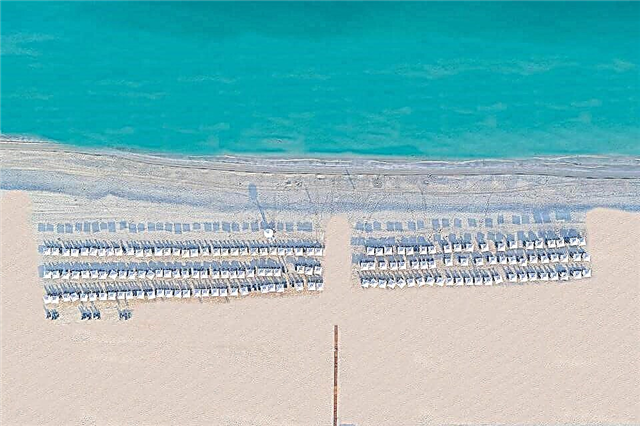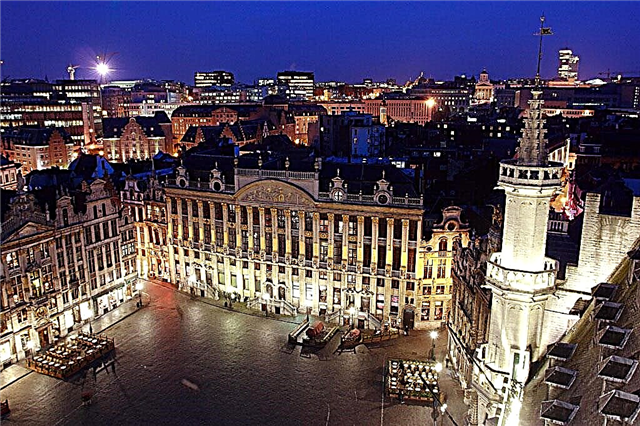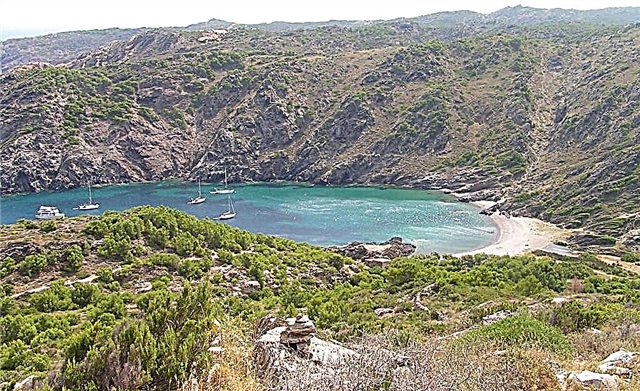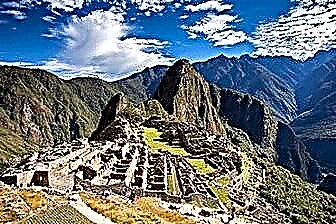Traveling to Hungary will give tourists a lot of unusual and pleasant experiences. There are no less sights of various kinds in it than in other European countries. In Hungary there are interesting corners of nature, ancient fortresses, castles, and many religious buildings of different eras and styles. Architects' sightseeing can be combined with visits to museums or the Hungarian Opera House.
You can enjoy a relaxing holiday in the thermal spas. There are warm springs with healthy water in almost every city. However, several of them can be distinguished. The Széchenyi Baths stand out for their size and luxury. Unusual and practically unparalleled in the world is the Miskolctapolca Cave Bath. For lovers of relaxation in natural conditions in Hungary there is more thermal lake Heviz.

Popular hotels at affordable prices.
from 500 rubles / day
What to see and where to go in Hungary?
The most interesting and beautiful places to visit, photos and a short description.
Hungarian parliament building
Located in Budapest on the banks of the Danube. Its construction, which began in 1885, lasted almost 20 years. Its architecture bizarrely combines the neo-Gothic and Parisian Bozar style with oriental motives. The parliament building is the largest in Hungary. 691 rooms are located under the dome with a height of 27 meters. The interior is richly decorated with mosaic panels, gilding and stained-glass windows. Excursions are organized for tourists.

Buda Fortress (Budapest)
The residence of the kings of Hungary, which is included in the UNESCO heritage list. The oldest part of the palace was built in the XIV century. Over the years of its existence, the fortress has experienced several sieges, destruction and rebuildings, which took away many historical architectural delights. The reconstruction of the castle was completed in 1980. Among the preserved historical buildings are the Sandor Palace, the House of Hungarian Wines, the Fisherman's Bastion.

Vysehrad fortress
Built in the XIII century. In the Middle Ages, it was the seat of the Hungarian kings. During the invasion of Austrian troops in the 18th century, it was almost completely destroyed. Among the ruins, only the surviving tower of Solomon towered. Reconstruction is currently underway. In the restored walls of the fortress, you can see the interiors of medieval kitchens and a dining hall, a torture chamber has been recreated, and there is a collection of ancient weapons.

Citadel (Budapest)
In the 18th century, the 235 meter high slopes of Gellert Hill were covered with vineyards. At the end of the 19th century, a citadel was built on its top. The view of both banks of the Danube gave it a special strategic value. In a military capacity, it existed for about 20 years, until the formation of Austria-Hungary. Nearby is the 14-meter Statue of Liberty on a 26-meter pedestal. It was installed in memory of the liberation of Hungary from the Nazis.

Szechenyi Chain Bridge (Budapest)
The symbol of the capital of Hungary. This is the first stone bridge connecting then two different cities - Buda and Pest. The opening took place in 1849, and at that time the bridge was one of the largest in the world. The bridge was reopened in 1949, after it had been recovered from being blown up by German troops. The bridge is currently 380 meters long and 14.5 meters wide. In the dark, the backlight turns on.

Shoes on the Danube embankment (Budapest)
The monument to the victims of the Holocaust is a sculptural composition in the form of 60 pairs of shoes. Many people call this monument the saddest in the world. Children's sandals, women's dress shoes, men's worn-out shoes - made of iron, they are placed on the Danube embankment as if their owners are about to return. A terrible reality became the idea for the monument - before the execution, the Nazis forced the victims to take off their shoes, and the bodies were thrown into the water.

Lake Balaton
Tourists often call Lake Balaton the “Hungarian Sea”, as the lake is almost 80 km long. A trip to the lake is one of the main tourist destinations in the country. The average depth of the lake is about 3 meters. The gentle southern shores attract many families with children for a beach holiday. The North Shore is more popular with sailing enthusiasts. There are many resorts and health centers on the shores of the lake.

Varoshliget Park (Budapest)
The park was established in 1799 on a swampy area. A network of water canals was laid on the drained territory, and thousands of trees were planted. Among them, several artificial lakes were equipped. Now it is one of the favorite parks for walking among Budapest citizens and guests of the city. It presents a lot of entertainment: a botanical garden, a zoo and a circus, Vaidahunyad Castle and several museums are available for inspection.

Szechenyi Baths (Budapest)
A large bath complex built in 1909. It houses 3 outdoor and 15 indoor pools, as well as several saunas. The complex is considered balneological. The baths are supplied with thermal water from the well of St. Istvan. The water temperature in the spring is 77 ° C, it rises to the surface from a depth of 1200 meters. The healing properties of thermal water help in the treatment of many diseases.

Heroes' Square (Budapest)
The famous square of the capital of Hungary. About 50,000 people came to its opening in 1896. In the middle of the square is the 36-meter Millennium Monument. On the colonnades, there are figures of the country's heroes, and between them there are 14 monuments to members of the Arpad royal dynasty and allegorical figures. The architectural basis of the square is formed by the buildings of museums built in the style of classicism with elements of eclecticism and baroque.

Fisherman's Bastion (Budapest)
The construction of the bastion was completed in 1905. It is an area in the form of a gallery 140 meters long, 8 meters wide, decorated with towers and balustrades. Despite the name, the bastion was not built for defensive purposes. Previously, this place was a fish trade, but now it is an excellent architectural addition to the Matthias Church. From the walls of the bastion, there is a delightful view of the Danube and the capital.

Matthias Church (Budapest)
Located on the Buda Hill. Built in the 14th century in the Gothic style. The bell tower of the church is the tallest building in the Buda Castle complex. Its height is 82 meters. The church has 3 naves with many adjoining chapels. The roof is covered with red tiles. The main decoration of the interior is stained-glass windows and wall paintings. Two columns have survived since 1260; they are located under the Bela tower.

Hungarian Opera House (Budapest)
The imposing opera house was built in the 19th century in the neo-Renaissance and Baroque styles. It is decorated with ornaments and sculptures. The wall paintings in the auditorium were made by famous artists: Tan, Szekey, Lotz. The horseshoe-shaped room has excellent acoustics. Famous actors, conductors and composers, including the Italian composer Giacomo Puccini, work with pleasure.

Hungarian National Museum (Budapest)
The theme of the museum is the history and art of Hungary during the period from the founding of the country to the present. In total, about a million exhibits are exhibited in the museum in various collections. Many archaeological finds are presented, including samples of stone writing from the Roman period. There are collections of coins, weapons, jewelry, household items from different periods, as well as a hall of the royal mantle.

House of Terror Museum (Budapest)
Housed in a former prison building and is dedicated to the totalitarian period in the history of Hungary. Austere building in gray with black edging. The view of the frame creates a large black visor with the word "TERROR" embossed on it.On sunny days, this inscription casts a shadow on the facade of the building. The museum's exhibitions feature exhibits left over from the fascist regime and requiring reflection: instruments of torture, documents and objects of that time.

Basilica of St. Adalbert (Esztergom)
Catholic temple in the city of Esztergom. Built on a hill on the banks of the Danube in 1869. The architecture of the temple is made in the neoclassical style; the building itself has a cruciform shape. The basilica is 118 meters long and almost 50 meters wide. The facade of the building is decorated with 8 columns. The interior is based on mosaics, columns, frescoes and statues. There is an observation deck on the dome of the basilica with excellent views of the city, mountains and Danube.

Pannonhalma Abbey
The Benedictine Abbey has a long history. It was founded in 996. The building has been rebuilt several times, so its architecture combines the styles of different eras. The unique religious ancient complex is included in the lists of UNESCO protected objects. Basilica of St. Martin Abbey amazes with the luxury of the interiors. The libraries store more than 300,000 unique and valuable books. There is a botanical garden and a winery.

Basilica of St. Stephen (Budapest)
A large-scale functioning temple with picturesque interiors. The construction of the temple was completed in 1905, and it lasted almost 50 years. The height of the basilica is 96 meters, from the observation deck under the dome you can see almost the entire capital. The interior is decorated with bronze bas-reliefs, marble and mosaics. Organ and classical music concerts are often held. The church choir sings at Sunday services.

Cathedral of Saints Peter and Paul (Pecs)
The Roman Catholic Cathedral is located on the Dome Square in Pecs. Built in the XI century. In the XVI-XVII centuries, the cathedral was used by the Turks as a mosque. The facade of the building is made in a classical style with sharp arched forms and is decorated with statues of the 12 apostles. The interior is dominated by gilded sculptures and frescoes. The organ of the cathedral consists of 75 pipes. The famous Franz Liszt performed masses there.

Szeged Cathedral
Incredibly beautiful neo-Romanism building, built of red brick in 1930. It is an architectural monument. Tourists are attracted by the towers 91 meters high, directed into the sky. In total, the cathedral has 57 turrets of different sizes. The main hall of the cathedral is designed for 5000 parishioners. Wall paintings, reliefs, mosaics in the Art Nouveau style - the unusual decor inside further enhances the vivid impression of the cathedral's design.

Tihany Abbey
Built on the site of an ancient earth fortress. As a result of enemy raids and fires, only the 1754 Baroque church has remained from the old building of the monastery. Its carved altars are luxuriously decorated and are considered a masterpiece of 18th century Hungarian wooden sculpture. Master Sebastian Stulhof worked on the creation of the altars for 25 years and did not charge for his work.

Reformed Cathedral (Debrecen)
It is considered the symbol of the city of Debrecen. The decoration is done in a classic traditional style - strictly and without unnecessary details. The interior decoration of the cathedral is also quite modest, the walls are painted with simple white paint. The area of the cathedral is quite large - it can accommodate up to 5,000 people. It is the largest Reformed church in Hungary. The chair of Lajos Koshshut is exhibited in the cathedral as an attraction.

Eger Fortress
A medieval fortress, the defenders of which showed heroism in the defense against the invasion of the Turks in 1552. Built in the XIII century, now it is a museum complex. The bastions and underground casemates are available for tourists. The Istvan Dobo Museum tells visitors about the rich history of the Eger Fortress. In summer, there are medieval-style festivals with knightly tournaments.

Gödöllö Royal Palace
Manor palace, a masterpiece of Hungarian Baroque architecture. Built in the XII century. For several centuries, a stable, a greenhouse, and a theater were added to it. Currently, it is a museum complex with the restored interiors of the royal chambers. The halls' expositions are dedicated to the Grashshalkovich dynasty. The chapel of St. John of Nepomuk. Around the palace there is a park with an area of 29 hectares.

Festetics Palace (Keszthely)
Located in a picturesque park near Lake Balaton. One of the largest castles in the country, built in the 18th century. The facade and interior decoration resembles the palaces of France. The castle houses a museum. The museum's collections include valuable and rare books, weapons from different eras. In the stables of the palace, samples of various carriages - carriages and carriages - are exhibited. Various official and entertainment events are held in the halls of the palace.

Historic center of Sopron
This place contains many architectural monuments of history, for the most part they were made in the XVI-XVIII centuries in the Baroque style. A labyrinth of narrow cozy streets with ancient buildings from different eras diverges from the main square. The Gothic Church of the Goat, the General's House, the House of Fabricius with archaeological exhibits and antiques - and that's not all. The symbol of the historic center is the Fire Tower 60 meters high.

Hollokyo village
Open Air Museum of Ethnography, which is included in the UNESCO heritage list. The village-museum is home to 500 people, and they all lead their normal daily lives. For visitors, this is a great opportunity to look at the folk traditions that have been preserved over several centuries. Many residents are engaged in traditional folk crafts - pottery, embroidery, wood carving.

Gyor old town
The historical district of the city, which is visited by thousands of tourists every year. They are attracted by the magnificent architectural ensembles of the old buildings of the 18th century. The starting point for the tour is the Szechenyi Central Square. It is surrounded by buildings in the Baroque style - the Abbot's house, the Jesuit church, the building of the old town hall, the Vashtushkosh house. In the Janos Xanthus Museum, you can get acquainted with the history of the city of Gyor.

Lillafured resort
The popular resort is located by Lake Hamori in the forests of the Bükk mountain range. To accommodate tourists, a hotel was built, which looks more like a palace. There are many guests in it at any time of the year. Travelers come here to enjoy the clean mountain air and picturesque views. Popular boat trips on the lake, walks in the woods. You can also visit the caves with bats or the Sinva Falls.

Cave Bath of Miskolctapolca
The uniqueness of the bath is in its location. It is located in a cave formed naturally over thousands of years. The cave is located in a large beech forest in the mountains. The air of the cave is considered medicinal, especially useful for asthma. Thermal water has a composition enriched with minerals, but at the same time with a low salt content. This allows you to stay in the water for an almost unlimited time.

Heviz
Thermal lake in the western part of the country. Rest on it is popular at any time of the year. The water temperature in it does not drop below 24 ° C even in winter, and in summer it reaches 36 ° C. Heviz is one of the largest thermal lakes in the world. Its area is 47,000 m². Substances in the composition of water help in the treatment of many diseases, but there are also contraindications - pregnancy, cancer, asthma, tuberculosis.

Aggtelek caves
Located in the karst mountains in the national park in the north of the country. Numerous caves form intricate labyrinths with many kilometers of passages. In total, experts count about 700 caves in the area. The largest cave Aggtelek is also one of the largest stalactite caves in Europe. It is 26 kilometers long, 8 of which are located in Slovenia.

Hortobagy
National park with an area of 800 km². The territory of the park is protected by UNESCO. An attraction is the Nine-Arch Bridge, which is 167 meters long. It was built over a marsh swamp in 1833.There is an inn near the bridge, which is 300 years old. It houses an ethnographic exhibition. Hortobagy is a popular holiday destination with many different types of entertainment, including a water park.

Tagore embankment (Balatonfured)
The town of Balatonfüred is located on the northern shore of the picturesque Lake Balaton. In 1926, the famous Indian poet Rabindranath Tagore visited the resorts of the city. According to the traditions of his country, he planted a lemon tree near the water, in gratitude for the hospitality. Other celebrities who visited the cities began to do the same. Over time, the alley of planted trees turned into a memorial park and became a decoration of the embankment.

Tokaj wine region
Included in the list of UNESCO sites. The history of Tokay winemaking began in 1550. The vineyards are located on the slopes of the mountains at an altitude of 400 meters. The special microclimate of the region is a special secret of making Tokay wines that gives them a unique and refined taste. Almost every residential building in the city has a wine cellar, and the main attraction is the wine cellars of Rákóczi.












